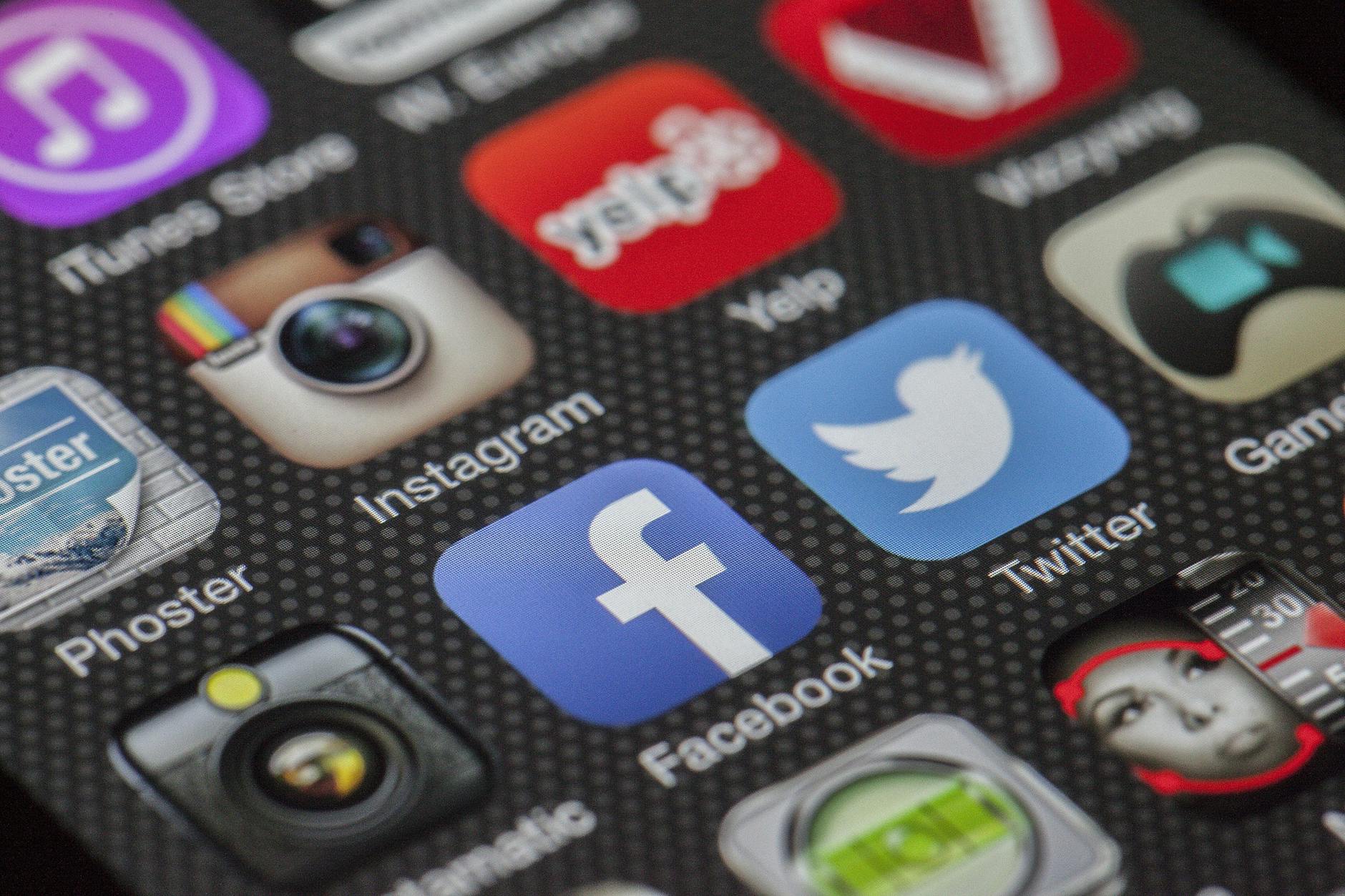
Are you struggling to keep up with the ever-evolving world of digital marketing? 🤔 You’re not alone. As technology advances at breakneck speed, marketers everywhere are facing the challenge of staying relevant and effective in an increasingly AI-driven landscape.
But what if AI could be your secret weapon instead of your biggest hurdle? 🚀 Imagine harnessing the power of artificial intelligence to supercharge your marketing efforts and skyrocket your social media presence. From creating captivating content to predicting consumer behavior with uncanny accuracy, AI is revolutionizing the way we connect with our audiences.
In this eye-opening blog post, we’ll explore 15 game-changing examples of AI in marketing and social media. Get ready to discover how AI-powered content creation, predictive analytics, and intelligent chatbots are transforming the industry. We’ll dive into cutting-edge applications like sentiment analysis, personalization at scale, and AI-driven advertising that are setting new standards for customer engagement. So, buckle up and prepare to unlock the future of marketing – your competitive edge awaits! 💡📈+ Add Section
AI-Powered Content Creation
AI-powered content creation is revolutionizing the way marketers produce and distribute content across various channels. This technology is enabling businesses to create high-quality, engaging content at scale, saving time and resources while maintaining consistency and relevance.
A. Automated Blog Writing
Automated blog writing tools use natural language processing (NLP) and machine learning algorithms to generate human-like content. These AI-powered systems can:
- Produce draft articles on various topics
- Suggest headlines and subheadings
- Optimize content for SEO
| Pros | Cons |
|---|---|
| Saves time and resources | May lack human creativity |
| Consistent output | Requires human editing |
| Scalable content production | Potential for generic content |
B. Social Media Post Generation
AI tools can now create compelling social media posts tailored to different platforms and audience preferences. These tools:
- Analyze trending topics and hashtags
- Generate platform-specific content
- Suggest optimal posting times
C. Personalized Email Marketing
AI-driven email marketing platforms use data analysis and machine learning to:
- Craft personalized subject lines
- Generate customized email content
- Optimize send times for individual recipients
This level of personalization can significantly improve open rates and engagement.
D. Video Script Generation
AI is now capable of assisting in video content creation by:
- Generating script outlines
- Suggesting talking points
- Creating storyboards based on input parameters
These AI-powered content creation tools are transforming the marketing landscape, enabling businesses to produce more content faster and with greater personalization. As we move forward, we’ll explore how AI is revolutionizing marketing strategies through predictive analytics.+ Add Section
Predictive Analytics for Marketing Strategies

Predictive Analytics for Marketing Strategies
Predictive analytics is revolutionizing marketing strategies by leveraging AI to forecast future outcomes based on historical data. This powerful tool enables marketers to make data-driven decisions and optimize their campaigns for maximum impact.
Customer Behavior Forecasting
AI-powered predictive analytics can accurately forecast customer behavior, allowing marketers to anticipate needs and preferences. By analyzing past purchase history, browsing patterns, and demographic data, AI models can predict:
- Future buying patterns
- Product preferences
- Likelihood of churn
This information helps businesses tailor their marketing efforts and improve customer retention.
Trend Prediction
AI algorithms excel at identifying emerging trends in vast amounts of data. For marketers, this means staying ahead of the curve by:
- Detecting shifts in consumer interests
- Predicting upcoming fashion or product trends
- Identifying potential market opportunities
By leveraging trend prediction, marketers can create timely and relevant campaigns that resonate with their target audience.
Campaign Performance Optimization
Predictive analytics enables marketers to optimize their campaigns in real-time. AI models can:
- Forecast campaign performance
- Suggest optimal budget allocation
- Recommend the best channels for maximum ROI
Here’s a comparison of traditional vs. AI-powered campaign optimization:
| Aspect | Traditional Approach | AI-Powered Approach |
|---|---|---|
| Speed | Slow, manual analysis | Real-time optimization |
| Accuracy | Limited by human capacity | High accuracy based on data patterns |
| Scalability | Difficult to scale | Easily scalable across multiple campaigns |
| Adaptability | Requires manual adjustments | Automatically adapts to changing conditions |
By harnessing the power of predictive analytics, marketers can create more effective, data-driven strategies that deliver better results and higher ROI. As we explore further, we’ll see how AI is transforming other aspects of marketing, such as customer interactions through chatbots and virtual assistants.+ Add Section
Chatbots and Virtual Assistants
Generating Image
Chatbots and Virtual Assistants
Now that we’ve explored AI-powered content creation and predictive analytics, let’s dive into how chatbots and virtual assistants are revolutionizing marketing and customer interactions.
24/7 Customer Support
Chatbots and virtual assistants have transformed customer support by providing round-the-clock assistance. These AI-powered tools can handle a wide range of customer inquiries, from basic FAQs to more complex issues, ensuring that customers receive timely responses regardless of the time of day. This not only improves customer satisfaction but also reduces the workload on human support teams.
- Benefits of 24/7 chatbot support:
- Instant responses
- Reduced wait times
- Consistent service quality
- Cost-effective solution
Lead Qualification
One of the most valuable applications of chatbots in marketing is lead qualification. By engaging with potential customers through conversational interfaces, chatbots can gather essential information and assess the likelihood of a lead converting into a customer.
| Lead Qualification Process | Chatbot Advantage |
|---|---|
| Initial engagement | Immediate response |
| Information gathering | Structured questions |
| Scoring and prioritization | Real-time analysis |
| Handoff to sales team | Seamless transition |
Personalized Product Recommendations
Virtual assistants excel at providing personalized product recommendations based on customer preferences and behavior. By analyzing past purchases, browsing history, and customer responses to questions, these AI-powered tools can suggest products that are more likely to resonate with individual customers.
- Key features of AI-driven product recommendations:
- Dynamic suggestion algorithms
- Cross-selling and upselling opportunities
- Improved customer experience
- Increased conversion rates
As we move forward, we’ll explore how AI is revolutionizing social media monitoring and sentiment analysis, providing marketers with invaluable insights into customer opinions and trends.+ Add Section
Social Media Monitoring and Sentiment Analysis

Social Media Monitoring and Sentiment Analysis
As we delve deeper into AI applications in marketing, let’s explore how social media monitoring and sentiment analysis are revolutionizing brand management and customer insights.
Brand Reputation Management
AI-powered social media monitoring tools have become indispensable for maintaining a positive brand image. These sophisticated systems continuously scan various social platforms, analyzing mentions, comments, and posts related to your brand. By leveraging natural language processing, they can interpret the sentiment behind each interaction, providing valuable insights into public perception.
| Feature | Benefit |
|---|---|
| Real-time monitoring | Immediate response to emerging issues |
| Sentiment categorization | Understand emotional context of mentions |
| Trend identification | Spot potential viral content early |
Competitive Analysis
AI doesn’t just monitor your brand; it also keeps tabs on your competitors. By analyzing competitors’ social media presence, AI tools can:
- Identify successful content strategies
- Detect shifts in market positioning
- Uncover emerging industry trends
This intelligence allows marketers to refine their strategies and stay ahead of the curve.
Real-Time Crisis Detection
Perhaps one of the most crucial applications of AI in social media monitoring is its ability to detect potential crises before they escalate. By identifying sudden spikes in negative sentiment or unusual patterns in mentions, AI systems can alert marketing teams to take swift action.
- Automated alerts for unusual activity
- Sentiment trend analysis over time
- Identification of key influencers during a crisis
With these capabilities, brands can respond promptly to mitigate damage and maintain customer trust. As we move forward, we’ll explore how AI is transforming advertising strategies to capitalize on these insights.+ Add Section
AI-Driven Advertising

AI-Driven Advertising
AI has revolutionized the advertising landscape, making it more efficient, targeted, and effective. Let’s explore how AI is transforming various aspects of advertising.
A. Programmatic Ad Buying
Programmatic ad buying uses AI algorithms to automate the purchase and placement of ads in real-time. This process ensures that ads reach the right audience at the right time and place, maximizing ROI.
- Benefits of programmatic ad buying:
- Increased efficiency
- Better targeting
- Real-time optimization
- Cost-effectiveness
B. Dynamic Ad Creation
AI-powered tools can generate personalized ad content based on user data and behavior. This dynamic approach allows for the creation of highly relevant ads that resonate with individual users.
| Traditional Ads | Dynamic Ads |
|---|---|
| Static content | Personalized content |
| One-size-fits-all | Tailored to individual preferences |
| Manual creation | Automated generation |
| Limited variations | Endless possibilities |
C. Audience Targeting Optimization
AI algorithms analyze vast amounts of data to identify and segment audiences with precision. This enables advertisers to target their ideal customers more effectively.
- Key factors in AI-driven audience targeting:
- Demographic data
- Behavioral patterns
- Interest profiles
- Purchase history
D. Ad Performance Prediction
Machine learning models can predict the performance of ads before they’re launched, allowing marketers to optimize their campaigns proactively.
By leveraging AI in advertising, marketers can create more impactful campaigns that deliver better results. Next, we’ll explore how AI is transforming image and video recognition in marketing, opening up new possibilities for visual content analysis and engagement.+ Add Section
Personalization at Scale
Generating Image
Personalization at Scale
In the era of digital marketing, personalization has become a cornerstone of successful campaigns. With the power of AI, marketers can now achieve personalization at scale, delivering tailored experiences to millions of customers simultaneously. Let’s explore how AI is revolutionizing personalization across various channels.
A. Product Recommendations
AI-driven recommendation engines have transformed the way businesses suggest products to their customers. These systems analyze vast amounts of data, including browsing history, purchase patterns, and demographic information, to offer highly relevant product suggestions.
Here’s a comparison of traditional vs. AI-powered recommendation systems:
| Traditional Recommendations | AI-Powered Recommendations |
|---|---|
| Based on broad categories | Personalized to individual |
| Limited data points | Utilizes vast data sets |
| Static suggestions | Dynamic and evolving |
| One-size-fits-all approach | Tailored to user preferences |
B. Dynamic Website Content
AI enables websites to adapt their content in real-time based on user behavior and preferences. This dynamic approach ensures that each visitor sees the most relevant information, improving engagement and conversion rates.
- Personalized landing pages
- Tailored product showcases
- Customized navigation menus
- Adaptive content blocks
C. Tailored Email Campaigns
Gone are the days of generic mass emails. AI-powered email marketing tools now create highly personalized campaigns by:
- Segmenting audiences based on behavior and preferences
- Optimizing send times for individual recipients
- Crafting personalized subject lines and content
- Dynamically adjusting email content based on user interactions
D. Customized Social Media Feeds
Social media platforms leverage AI to curate personalized feeds for each user. This customization extends to branded content and ads, ensuring that users see the most relevant posts from businesses they follow or might be interested in.
By harnessing the power of AI for personalization at scale, marketers can create more engaging, relevant, and effective campaigns across multiple channels. This approach not only improves customer experience but also drives better marketing outcomes and ROI.+ Add Section
Image and Video Recognition in Marketing

Image and Video Recognition in Marketing
AI-powered image and video recognition technology is revolutionizing marketing strategies, offering unprecedented capabilities for visual content analysis and optimization. Let’s explore three key applications of this technology in marketing:
Visual Search Optimization
Visual search is transforming how consumers discover products online. By leveraging AI-powered image recognition, marketers can optimize their visual content for search engines and e-commerce platforms. This technology allows users to search for products using images instead of text, creating new opportunities for brands to increase their visibility.
- Benefits of visual search optimization:
- Improved product discoverability
- Enhanced user experience
- Increased conversion rates
- Competitive advantage in e-commerce
User-Generated Content Analysis
AI-driven image and video recognition tools enable marketers to analyze vast amounts of user-generated content (UGC) across social media platforms. This analysis provides valuable insights into consumer preferences, trends, and brand sentiment.
| Aspect | Benefits |
|---|---|
| Brand Mentions | Identify visual brand mentions in photos and videos |
| Product Usage | Understand how customers use products in real-life situations |
| Trend Identification | Spot emerging visual trends related to your industry |
| Competitor Analysis | Monitor competitor presence in user-generated content |
Automated Content Tagging
AI-powered image recognition simplifies the process of tagging and categorizing visual content. This automation saves time and improves the accuracy of metadata, making it easier to organize, search, and utilize visual assets in marketing campaigns.
Key advantages of automated content tagging:
- Consistent and accurate metadata
- Improved searchability of visual assets
- Enhanced content management efficiency
- Better targeting and personalization capabilities
By harnessing the power of AI in image and video recognition, marketers can unlock new possibilities for engaging with their audience and optimizing their visual content strategy. As we move forward, we’ll explore how voice search optimization is changing the landscape of digital marketing and SEO.+ Add Section
Voice Search Optimization

Voice Search Optimization
As AI continues to revolutionize marketing, voice search optimization has emerged as a critical strategy for businesses to stay ahead. With the increasing popularity of voice-activated devices and virtual assistants, marketers must adapt their approaches to cater to this growing trend.
Conversational Marketing Strategies
Conversational marketing is at the heart of voice search optimization. To effectively reach customers through voice search, businesses need to:
- Use natural language in content
- Focus on long-tail keywords and questions
- Create FAQ pages that address common voice queries
Here’s a comparison of traditional and conversational marketing strategies:
| Traditional Marketing | Conversational Marketing |
|---|---|
| Keyword-focused | Natural language-focused |
| Short-tail keywords | Long-tail keywords and questions |
| Product-centric content | User-centric content |
| Formal tone | Casual, conversational tone |
Voice-Activated Ads
Voice-activated ads represent an innovative approach to reaching consumers through smart speakers and voice assistants. Key aspects include:
- Creating audio-friendly ad content
- Leveraging voice assistant skills or actions
- Implementing interactive voice experiences
These ads offer a unique opportunity to engage users in a more personal and immersive way, enhancing brand recall and customer experience.
Voice Commerce Integration
Voice commerce is rapidly gaining traction, allowing users to make purchases using voice commands. To optimize for voice commerce:
- Ensure product descriptions are voice-search friendly
- Implement voice-activated checkout processes
- Develop voice-specific promotions and offers
By integrating voice commerce capabilities, businesses can tap into a growing market of consumers who prefer the convenience of voice-activated shopping.
As we move forward, the next section will explore how AI enhances customer segmentation, allowing for even more personalized marketing strategies.+ Add Section
AI-Enhanced Customer Segmentation

AI-Enhanced Customer Segmentation
Now that we’ve explored various AI applications in marketing, let’s dive into how AI is revolutionizing customer segmentation. AI-enhanced customer segmentation takes traditional methods to the next level, offering marketers unprecedented insights and targeting capabilities.
Micro-Segmentation
AI enables marketers to create hyper-specific customer segments based on a multitude of data points. This micro-segmentation allows for highly personalized marketing strategies tailored to each group’s unique characteristics and preferences.
- Benefits of micro-segmentation:
- Increased marketing efficiency
- Higher conversion rates
- Improved customer satisfaction
Behavioral Clustering
AI algorithms can analyze vast amounts of customer behavior data to identify patterns and group customers with similar behaviors together. This approach goes beyond traditional demographic segmentation, providing a more nuanced understanding of customer motivations and preferences.
| Traditional Segmentation | AI-Powered Behavioral Clustering |
|---|---|
| Based on demographics | Based on actual behaviors |
| Static segments | Dynamic, evolving segments |
| Limited data points | Utilizes vast amounts of data |
| Manual analysis | Automated pattern recognition |
Predictive Lifetime Value Analysis
AI takes customer segmentation a step further by predicting the potential lifetime value of each customer or segment. This allows marketers to:
- Allocate resources more effectively
- Tailor retention strategies
- Identify high-value customers for special attention
By leveraging AI for customer segmentation, marketers can create more targeted, effective campaigns that resonate with their audience on a deeper level. This not only improves marketing ROI but also enhances the overall customer experience.+ Add Section
Automated A/B Testing
Automated A/B Testing
A/B testing has long been a staple in marketing, but AI takes it to a whole new level. Automated A/B testing leverages artificial intelligence to streamline and enhance the testing process, allowing marketers to optimize their campaigns with unprecedented efficiency and accuracy.
Continuous Optimization
AI-driven A/B testing doesn’t stop after a single round of tests. It continuously optimizes your marketing efforts by:
- Analyzing large volumes of data in real-time
- Identifying patterns and trends that humans might miss
- Automatically adjusting test parameters based on ongoing results
This continuous optimization ensures that your marketing strategies are always improving, staying ahead of the curve in an ever-changing digital landscape.
Multivariate Testing at Scale
AI enables marketers to conduct complex multivariate tests that would be impractical or impossible to manage manually:
| Feature | Traditional A/B Testing | AI-Powered Multivariate Testing |
|---|---|---|
| Variables Tested | 1-2 at a time | Multiple variables simultaneously |
| Speed | Slow, sequential | Rapid, parallel testing |
| Complexity | Limited | Handles intricate combinations |
| Insights | Basic | Deep, interconnected insights |
With AI, you can test numerous variables simultaneously, such as headlines, images, CTAs, and layouts, to find the optimal combination for your audience.
Real-Time Performance Adjustments
One of the most powerful aspects of AI in A/B testing is its ability to make real-time adjustments:
- Instant analysis of incoming data
- Automatic allocation of traffic to better-performing variants
- Dynamic content adjustments based on user behavior and preferences
This real-time capability means that your campaigns are always performing at their best, maximizing ROI and engagement without constant manual intervention.
By leveraging AI for automated A/B testing, marketers can make data-driven decisions faster, optimize campaigns more effectively, and deliver personalized experiences that resonate with their target audience. As we move forward, we’ll explore how AI is revolutionizing another crucial aspect of marketing: influencer partnerships and campaign management.+ Add Section
AI in Influencer Marketing
AI in Influencer Marketing
As influencer marketing continues to grow, AI is revolutionizing how brands identify, collaborate with, and measure the impact of influencers. Let’s explore three key areas where AI is making a significant difference in influencer marketing.
Influencer Identification and Matching
AI algorithms are transforming the way brands find the perfect influencers for their campaigns. By analyzing vast amounts of data, including:
- Content performance
- Audience demographics
- Engagement rates
- Brand affinity
These AI-powered tools can identify influencers who align closely with a brand’s values and target audience. This precision matching leads to more authentic partnerships and better campaign results.
| AI Feature | Benefit |
|---|---|
| Data analysis | Identifies ideal influencers based on multiple factors |
| Pattern recognition | Uncovers hidden connections between brands and influencers |
| Predictive modeling | Suggests potential successful partnerships |
Performance Prediction
AI doesn’t just help in selecting influencers; it also plays a crucial role in predicting campaign performance. By leveraging machine learning algorithms, marketers can:
- Forecast engagement rates
- Estimate reach and impressions
- Predict ROI for influencer collaborations
This predictive capability allows brands to make data-driven decisions, allocate budgets more effectively, and optimize their influencer marketing strategies for maximum impact.
Fake Follower Detection
One of the most valuable applications of AI in influencer marketing is the ability to detect fake followers and engagement. AI-powered tools can:
- Analyze follower growth patterns
- Identify suspicious account activities
- Flag unusual engagement metrics
By using these AI-driven insights, brands can ensure they’re partnering with authentic influencers who have genuine audiences, protecting their investments and maintaining the integrity of their campaigns.
As we move forward, we’ll explore how AI is transforming another critical aspect of marketing: customer service.+ Add Section
Predictive Customer Service
Predictive Customer Service
Now that we’ve explored various AI applications in marketing, let’s dive into how AI is revolutionizing customer service through predictive capabilities. Predictive customer service leverages artificial intelligence to anticipate and address customer needs before they become issues, enhancing overall satisfaction and loyalty.
Proactive Issue Resolution
AI-powered systems can analyze patterns in customer behavior, product usage, and historical data to identify potential problems before they occur. This proactive approach allows businesses to:
- Reach out to customers with solutions before they even realize there’s an issue
- Reduce the number of incoming support tickets
- Improve customer experience by minimizing downtime or frustration
| Traditional Approach | Predictive Approach |
|---|---|
| Reactive problem-solving | Proactive issue prevention |
| Longer resolution times | Faster, preemptive solutions |
| Higher customer frustration | Improved customer satisfaction |
Churn Prevention
Predictive analytics can help identify customers who are at risk of churning, allowing businesses to take targeted action to retain them. AI models can:
- Analyze customer engagement metrics
- Detect changes in usage patterns
- Identify common characteristics of churned customers
- Suggest personalized retention strategies
By intervening early, companies can significantly reduce customer churn rates and improve overall retention.
Customer Satisfaction Forecasting
AI algorithms can predict customer satisfaction levels based on various factors, including:
- Past interactions
- Product usage data
- Customer feedback
- Social media sentiment
This forecasting allows businesses to:
- Anticipate potential dips in satisfaction
- Implement preemptive measures to maintain high satisfaction levels
- Allocate resources more effectively to address predicted issues
By leveraging predictive customer service, businesses can create a more proactive, efficient, and satisfying experience for their customers. Next, we’ll explore how AI is transforming social media management, further enhancing marketing efforts across digital platforms.
